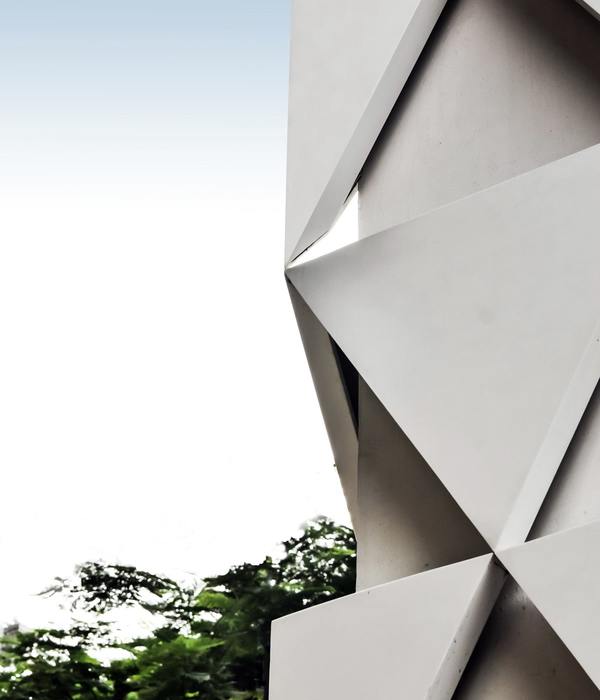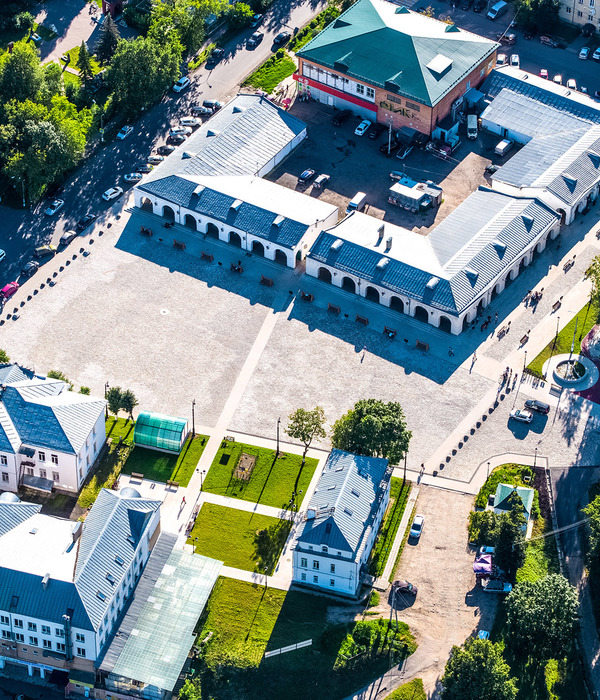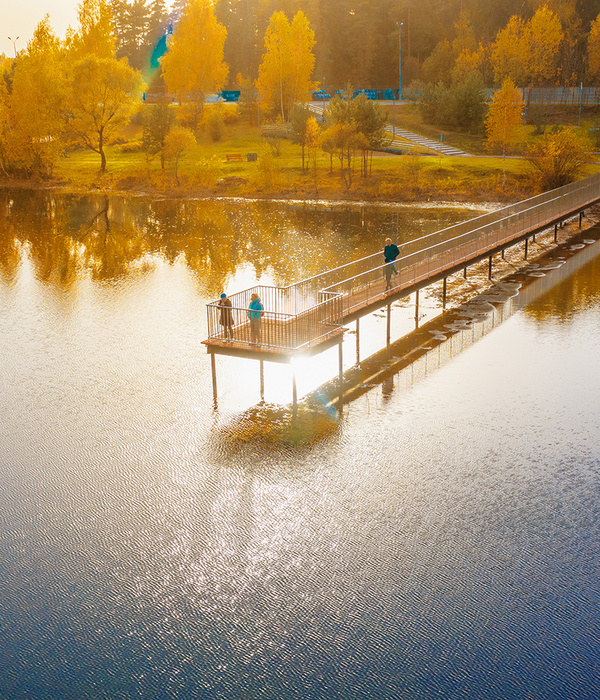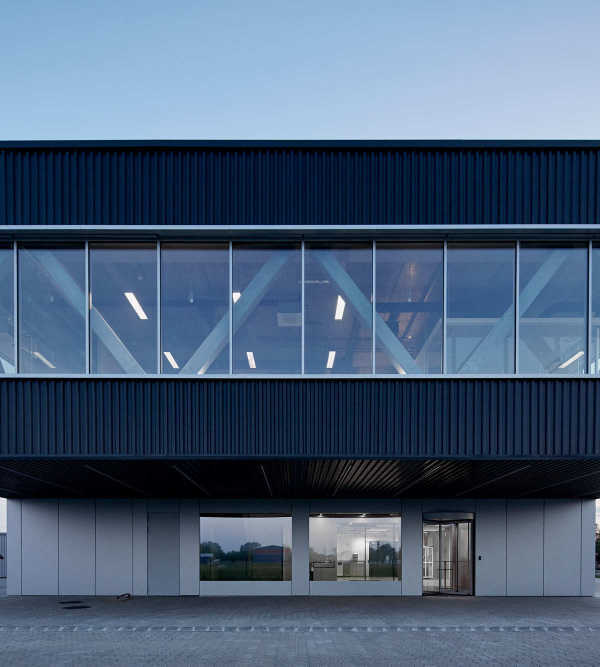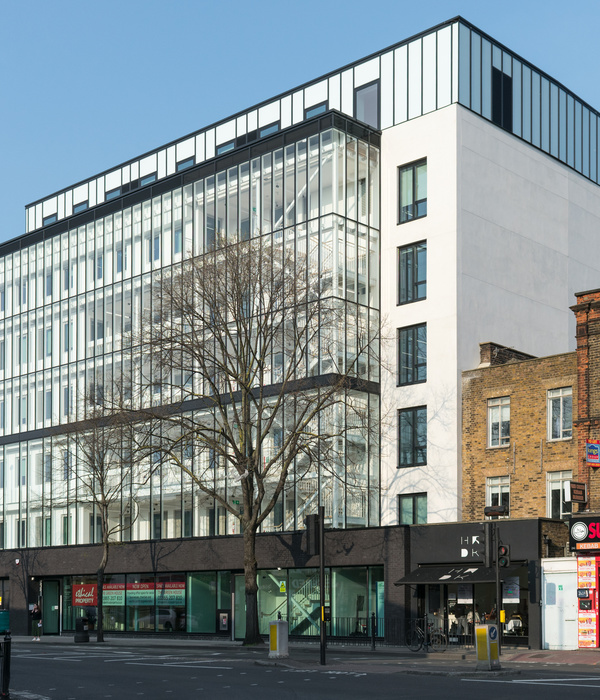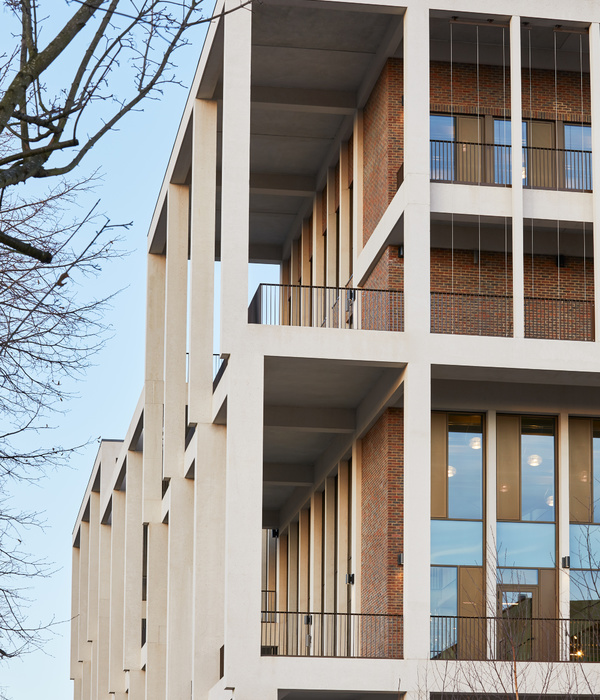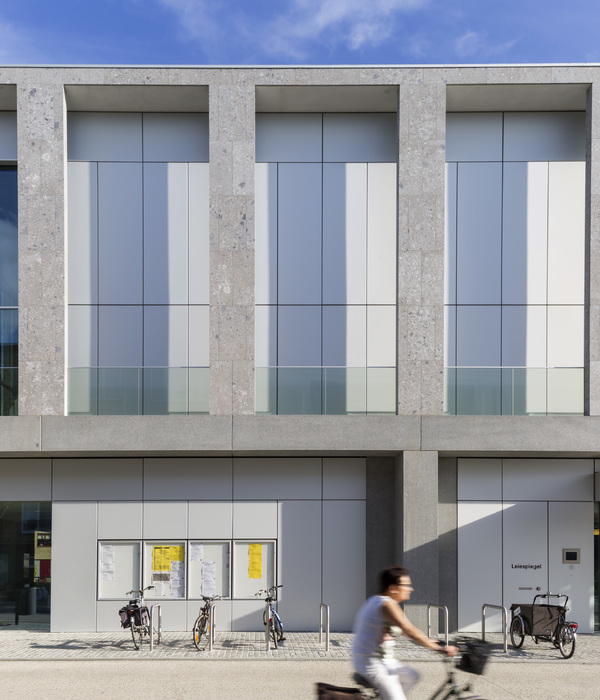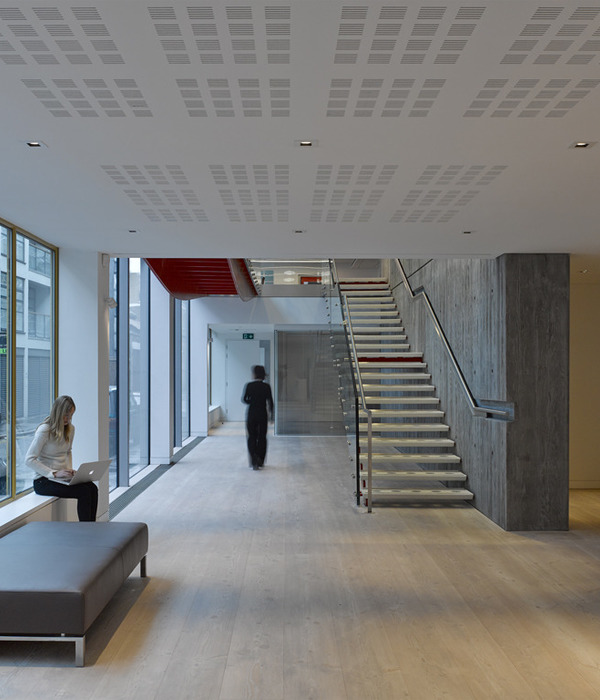Alun-alun Kejaksan是一个占地1.2公顷的集会广场,坐落在西爪哇的井里汶市,与At-Taqwa清真寺相邻。作为前苏丹统治的领土,井里汶有着丰富的历史;同时它也是一个拥有重要港口的沿海城市,因此受到来自不同文化的影响。“Alun-alun”是印度尼西亚城市中特有的一种景观类型,意为与宫殿、政府中心、清真寺或市场毗邻的露天广场。
Alun-alun Kejaksan, a 1.2-hectare gathering square is located in the city of Cirebon in West Java next to the important At-Taqwa Mosque. Cirebon, being a former Sultanate has a rich history also due to its location as a coastal town with important harbor and therefore various cultures being influential. Alun-alun in itself is a unique urban Indonesian typology of open-air plaza adjacent to a palace, a governmental center, a mosque, or a market.
▼项目概览,general view © Kemala Montesa
尽管有着突出的地理位置,但广场所在的区域并没有得到充分的利用。除了西爪哇政府的委托,该项目的设计还纳入了对多方利益相关者的考量。首先,At-Taqwa清真寺对广场附近的荒地拥有非正式的所有权,尤其是在伊斯兰节日期间,清真寺的祈祷区域需要向外扩展。第二,市政府和市民迫切需要一个位于市中心的汇集场所,同时还要保持现有商铺的发展,以便将他们集中到一个新的商贩中心。第三,广场上屹立着一座历史悠久的纪念碑,其中部被道路一分为二,在本次设计中需要被重新整合。
Despite its prominent location, the site had not been used to its full potential. Although the project is commissioned by the Governor of West Java, additional stakeholders also formed the design brief. Firstly, the At-Taqwa mosque claims informal ownership of the adjacent formerly barren land especially during important Islamic holidays where they need to extend the area of prayer to the outside due to high attendance. Secondly, the municipality and citizens are in dire need for a public space to recreate and gather in the city center, while maintaining the business of existing street vendors and therefore accommodating them into a hawker center. Thirdly, a historical monument in form of an obelisk which is cut off by a road turn needed to be reintegrated.
▼广场鸟瞰,ceremonial square above © Kemala Montesa
▼从广场望向微型图书馆,microlibrary from hawker center © Kemala Montesa
设计团队提出了一个下沉式的纪念广场方案:广场上设置台阶座位,拥有向纪念碑敞开的视野。墙壁上的文字是由德高望重的尊长和历史学家共同撰写,作为他们参与该项目的象征。
鉴于以往为印度尼西亚市政府打造公共空间的经历,SHAU设计团队充分认识到了弹性建造与设计选择的重要性。基于对前面所提到的多方利益相关者的需求的考虑,设计团队发起了关于建筑感功能与空间分配的讨论会,最终确定了在At-Taqwa清真寺旁边建立中央主广场的方案,使其可以同时服务于宗教仪式、国家庆典和活动聚会。其他的一系列功能空间均以松散的形式分布在广场周围,包括公交车站、庇护亭、纪念广场、商贩区、游乐场和微型图书馆等。设计的目标是最大程度地增加绿化面积以改善微气候,通过阶梯式花池景观来管理雨水,并将所有的功能、交通动线与过渡空间同一为一个整体。
▼轴测图,axon © SHAU Indonesia
This happens via a sunken memorial plaza, with steps for seating opening a view towards the monument. The information texts on the wall are written and executed by the elders and historians as a token of their participation.
Having designed previously public space projects in Indonesia organized by municipalities and executed via a public tendering process, SHAU knows about the importance of resilient materialization and design choices. With that in mind and all the earlier mentioned stakeholder’s requirements a negotiation process of function and spatial allocations was initiated resulting in a central main square next to the At-Taqwa Mosque which can be used for spiritual and also national ceremonies and event gatherings. All the other functions such as bus stop, shelter, memorial plaza, hawker center, playground and microlibrary are loosely grouped around at the perimeter. It was also the aim to maximize green surfaces to improve microclimate, rainwater management in form of a stepping planter landscape structuring all functions, circulation and in-between spaces.
▼纪念广场,memorial plaza © Kemala Montesa
▼下沉座位,the sunken plaza © Kemala Montesa
广场的一侧是标志性的Gapura塔门,标示出从市区进入广场的入口;另一侧设有一道“五柱式”的大门,标志着从At-Taqwa清真寺进入广场的入口。这两道相对的门户象征着世俗与精神需求之间的对话,同时也强调了介于中间的聚集广场的连接意义。
On one side of Alun-alun an iconic Gapura was installed marking the entrance from the city and on the opposite side a five-pillar gate was installed marking the entrance from the At-Taqwa Mosque. Both opposing gates represent a dialogue between worldly and spiritual needs, emphasizing an open dialogue with the square in-between as a gathering place.
▼从Gapura塔门望向“五柱式”大门,view towards the five-pillar gate from the Gapura © Kemala Montesa
▼从Gapura塔门望向At-Taqwa清真寺,view towards the At-Taqwa Mosque from the Gapura © Kemala Montesa
▼“五柱式”大门,the five-pillar gate © Kemala Montesa
▼“五柱式”大门,the five-pillar gate © Kemala Montesa
▼“五柱式”大门近景,the five-pillar gate detail © Kemala Montesa
教育和游戏功能分别以微型图书馆和游乐场的形式被结合至场地中。其中,微型图书馆被打造为一个阶梯式的平台,兼具座位的功能,其顶部设有能够俯瞰广场的观景平台,为人们带来不同方向的视野。微型图书馆展现了SHAU事务所和市政府在公民文化普及方面的一贯努力,使居民们能够在友好的环境中自然地提高对于阅读的兴趣。同时,图书馆和游乐场分散了广场原先专注于宗教仪式和国家庆典的使用目的,使广场更加贴近市民与游客的日常生活。
Educational and play functions are accommodated in forms of a microlibrary and playground. The microlibrary as a part of SHAU’s series of multi-programmatic reading spaces is made as a stepped platform which can be used as seating, while the rooftop is a viewing platform overlooking the alun-alun and enable people to obtain a different perspective and overview. The microlibrary fulfills SHAU’s and the city’s literacy agenda to bring up reading interest in a friendly setting. Both library and playground also diffuse the purpose of the alun-alun for exclusively religious or national events which only happen a few times per year and opens up the functionality for a wider audience and everyday usage.
▼微型图书馆,The microlibrary © Kemala Montesa
▼顶部设有能够俯瞰广场的观景平台,the rooftop is a viewing platform overlooking the alun-alun © Kemala Montesa
▼图书馆台阶细部,microlibrary close up stairs © Kemala Montesa
▼微型图书馆局部,microlibrary detail © Kemala Montesa
▼从商贩中心望向游乐场,view to the playground from the hawker centre © Kemala Montesa
▼游乐场,playground © Kemala Montesa
广场的物质和几何形式参考了广场上既有的阶梯式塔门(坎迪班塔,又称作善恶门)。这些传统的元素被重新阐释为花池景观、庇护亭和微型图书馆,并遵循了相同的材料、语言和构造逻辑。砖材被作为打造广场的主要材料,在与井里汶历史遗迹产生对话的同时,还体现了实用性方面的考量,例如材料可用性、对当地经济的刺激作用、雇用当地劳动力以及更加简单的施工过程等。材料与形式上的参照还有利于提高市民的接受度和归属感,尽管是以现代的方法完成,但广场的设计语言依然为人们所熟知。
▼设计示意,Concept © SHAU Indonesia
The materiality and geometry refer to local stepped gapura or candi bentar – or a split gateway– and pedestals made of raw bricks which can be seen at Keraton Kasepuhan – Sultan’s palace in Cirebon. These traditional elements are reinterpreted into planter topography, shelter and microlibrary in a transformative way where every element stems from the same material, language, and constructive logic. By choosing brick as the main material for Alun-alun Kejaksan, it does not only refer to historical places in Cirebon but adheres to practical aspects like availability and stimulating the local economy employing local labor and a simple and more forgiving construction process. The material and formal references are also important to gain acceptance and sense of belonging from the citizens, as they are familiar with the design language even though it is done in a contemporary manner.
▼微型图书馆台阶,microlibrary stairs © Kemala Montesa
▼广场花池景观,ceremonial square and planters © Kemala Montesa
▼纪念广场夜景,memorial plaza evening © Kemala Montesa
▼城市大门夜景,city gate frontal evening © Kemala Montesa
▼规划示意,Urban and green © SHAU Indonesia
▼平面图,Plan © SHAU Indonesia
▼剖面图,Section © SHAU Indonesia
Architects: SHAU Indonesia
Area: ± 12.000 m²
Year: 2021
Client: Province of Jawa Barat/West Java
City: Cirebon
Country: Indonesia
Construction Cost: 2.750.000 US$
Team SHAU: Florian Heinzelmann, Daliana Suryawinata with Rizki M. Supratman, Ignatius Aditya Kusuma, Ryan Azhar, Aprilea S. Ariadi, Ben Barukh Kurniawan, Miftah Adisunu N. Alui, Imam Supratiko, Rio Nuryadi Santosa
Contractor: Phase 1: PT Inti Cipta Sejati, Phase 2: PT. Dinamis Sarana Utama
Photographer: Kemala Montesa
{{item.text_origin}}


